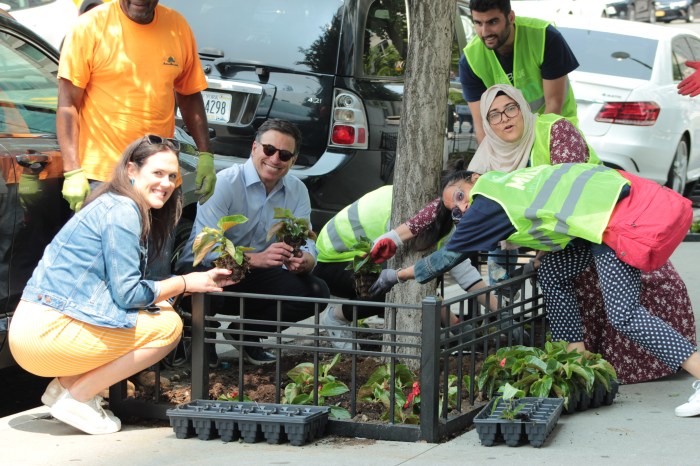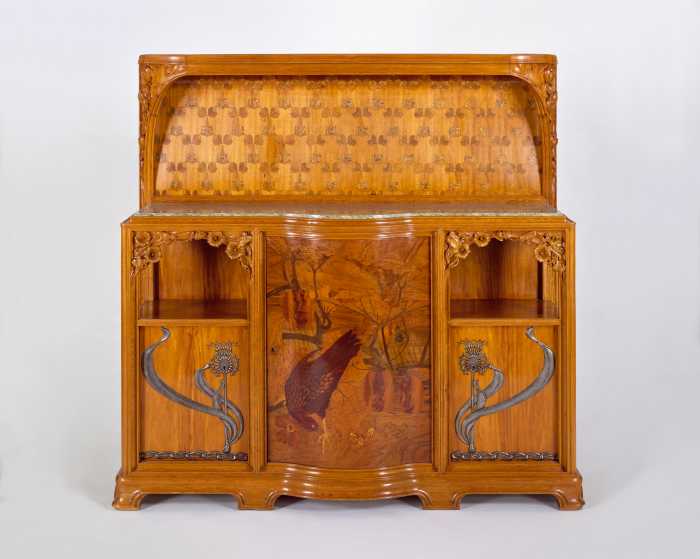
Photo courtesy of the LIC BID.
April 7, 2025 By Ethan Marshall
As the Long Island City Business Improvement District (LIC BID) celebrates its 20th anniversary, community leaders and founding members are reflecting on the district’s transformative impact on one of New York City’s fastest-growing neighborhoods.
Established in 2005 and managed by the Long Island City Partnership, the BID has played a critical role in reshaping the once-industrial district into a thriving hub for business, arts and residential life.
David Brause, Founding Chairman of the LIC BID and president of Brause Realty, traced the area’s turnaround to his family’s 1980 purchase of the Brewster Building at 27-01 Queens Plaza North. Originally built in 1911, the historic structure once housed manufacturers of horse-drawn carriages, early automobiles and even fighter planes during World War II.

LIC BID Founding Chairman David Brause. Photo courtesy of the LIC BID.
At the time of the purchase, the building was largely used for garment manufacturing. Brause recalled how his father, Louis Brause, recognized the property’s potential, particularly due to its location near the Queensboro Bridge, the subways and Manhattan.
However, as the city’s garment industry declined through the 1990s, the building became increasingly difficult to lease. Brause Realty eventually vacated it and brought in Gensler architects to redesign it as a Class-A office space. The first major tenant was MetLife, which relocated its headquarters there from Manhattan in 2001.
With the arrival of MetLife came a new awareness of the neighborhood’s needs. Despite the new investment, the area around Queens Plaza was plagued by graffiti, litter and poor lighting. Public safety was also a concern for employees commuting to and from the building.
In 2003, MetLife executives approached Brause Realty with a proposal to form a Business Improvement District to make the area more inviting for workers and future tenants.
“We have always been a big fan of BIDs,” said Brause. “BIDs can be a really great generator of neighborhood benefits. In addition to keeping the MetLife employees and other businesses and residents safe, there’s all sorts of other things we can do—beautify the streets, clean up the graffiti, get the gum off the sidewalks, deal with the garbage, put plantings out, add benches and lighting.”
It took roughly a year to secure enough support from property owners for the city and state to formally approve the BID, which officially launched in 2005. Initially covering 84 properties along Queens Plaza and Jackson Avenue, the BID has since expanded its footprint multiple times.
As a result of sustained investment in streetscape improvements, marketing and public safety, Long Island City has become increasingly attractive not only for businesses, but also for new residents and cultural institutions.
Brause credited the BID’s annual LIC Real Estate Breakfast—now a staple industry event—as a key driver in the neighborhood’s evolution. What began with just 50 attendees has grown to more than 300.
“We were looking for ways to make Long Island City into a real neighborhood,” Brause said. “The BID had just been formed, and we decided to host events. We said, what if we create a panel with some other owners and businesses who were interested in improving their real estate and bringing in new tenants and retailers?”
Today, the neighborhood is home to a wide range of office, industrial, retail and residential uses. Long Island City Partnership President Laura Rothrock emphasized the area’s distinctiveness and explosive growth.

Long Island City Partnership President Laura Rothrock. Photo courtesy of the LIC BID.
“Long Island City is the fastest-growing neighborhood in the city in terms of population and jobs,” Rothrock said. “Census data from 2010 to 2020 shows that the population grew by 11,000 people and jobs by 30,000 over that span. We expect those numbers are even higher now.”
With major tenants such as JetBlue headquartered in the Brewster Building, city agencies operating nearby, and artistic institutions like MoMA PS1 calling the neighborhood home, Rothrock noted that Long Island City is no longer a fringe location—it’s a destination.
“There’s not a lot of areas in New York City that have so much development opportunity,” she said. “There’s been a lot of land use changes over the years that have contributed to Long Island City’s growth.”
One of the BID’s most significant developments has been its expansion into the industrial areas east of Sunnyside Yard. While those areas may seem less visible, Rothrock said they have proven vital, with foot traffic and businesses such as maker spaces growing in importance.
Looking ahead, both Brause and Rothrock expressed optimism about the Long Island City Neighborhood Plan, a city-led rezoning initiative currently under review. If passed, the plan is expected to generate new investments in open space, transportation and infrastructure improvements across the district.
Rothrock also noted that technological change could once again reshape the industrial landscape of Long Island City over the next decade.
“The Brewster Building itself reflects the evolution of industry,” she said. “The BID has to be ready to adapt to those changes and make sure services evolve to match the needs of businesses and residents.”
Even as Long Island City has become a magnet for development and investment, Brause said it’s often the smaller projects that mean the most.
He pointed to the planting of tens of thousands of tulip bulbs across the district last fall as a symbol of the neighborhood’s community spirit. Volunteers—including JetBlue employees, artists, residents and BID members—came together to beautify the area.

Brause and Rothrock both take pride in the volunteer work they have done for the LIC community. Photo courtesy of the LIC BID.
“If you take care of the small stuff, the big stuff starts happening,” Brause said. “It’s emblematic of the community spirit that the BID and the Partnership have really spearheaded.”
He added: “It’s no longer a scary place. It’s an amazing, eclectic, vibrant neighborhood—and just seeing the tulips pop up each spring reminds us of how far we’ve come.”
Rothrock agreed, saying she appreciates the diversity Long Island City offers—from its waterfront parks to its historic landmarks and growing arts scene.
“Long Island City is a place where it all comes together,” she said.





